The 1960s were a transformative period for the country with Civil Rights at the forefront. African Americans gained traction in political positions both at the state and local level, and Los Angeles was no exception. Fortunately, Rolland Curtis was around to document many of these leaders. As a Field Deputy to Councilmembers Billy Mills and Tom Bradley, Curtis was in a unique position to be be present for many community and political gatherings and was seldom without his camera. His collection of roughly 7,000 images portraying African American life and politics of the 1960s was personally donated to the Los Angeles Public Library by his widow, Gloria, and is in the process of being digitized.
In honor of African American History Month, here is a sampling of images from the collection which shine a spotlight on some of the state and local leaders of this era.
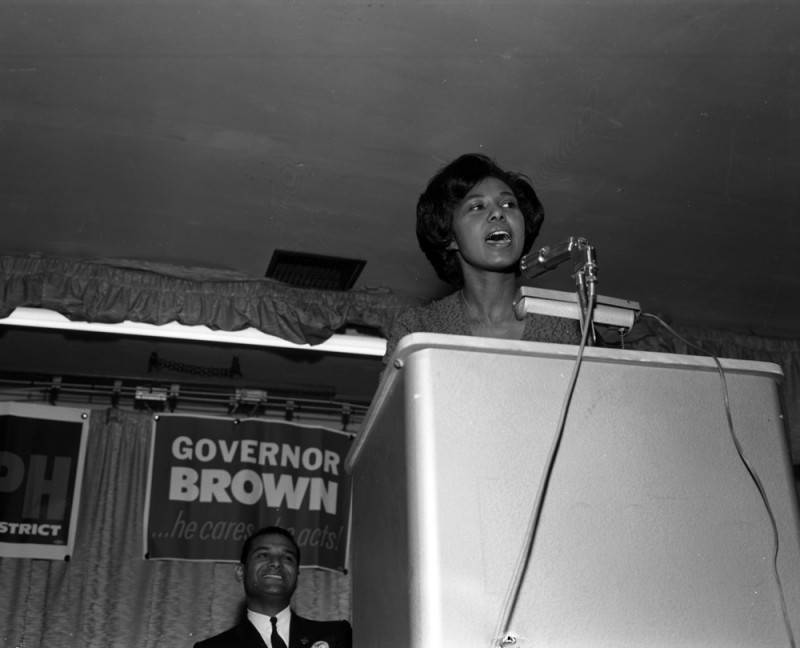
In 1966, Yvonne Brathwaite Burke became the first African American woman elected to the California Assembly, and in 1972, was the first woman elected to the House. She was also the first woman to chair the Congressional Black Caucus. In 1972, she became the first Congresswoman to give birth and be granted maternity leave while serving Congress. Here, she is shown speaking at a rally for gubernatorial incumbent Pat Brown, circa 1966 as Councilman Billy G. Mills looks on. (Rolland Curtis Collection/Los Angeles Public Library)
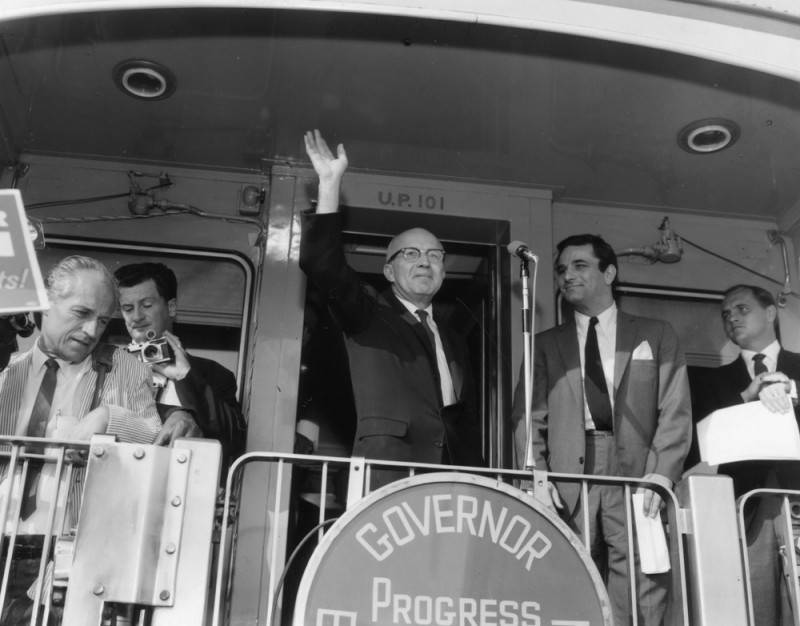
Augustus Hawkins was the second African American elected to the California Assembly, the first African American to serve California in Congress, and the first black politician west of the Mississippi River elected to the House of Representatives. Hawkins was fair skinned, often being mistaken for white and given preferential treatment on buses while growing up. He chose to walk instead. He was a champion of equal employment opportunities, fair housing and civil rights. Here, he waves to supporters from Governor Edmund G. Brown's campaign train in 1966. Actors Peter Falk and Bob Newhart are seen on the right. (Rolland Curtis Collection/Los Angeles Public Library)
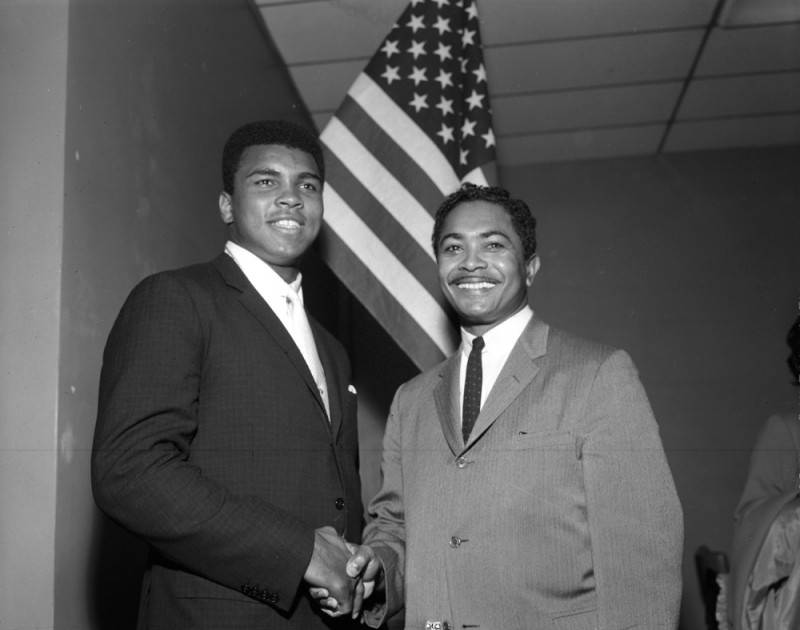
Born in Trinidad, Mervyn Dymally moved to the United States at the age of 19 and became a citizen in 1957. In 1962, he became the first foreign-born black lawmaker elected to the Assembly. In 1966, he was the first African American elected to the state Senate, and California's first African American Lieutenant Governor in 1974. Dymally had amazing staying power. In 2002, he found himself dissatisfied with the candidates for his original Assembly seat and chose to run again, winning back the seat he'd left, at the age of 76. Here, Mervyn Dymally (right) is shown with Muhammad Ali at a Compton NAACP meeting 1966. (Rolland Curtis Collection/Los Angeles Public Library)
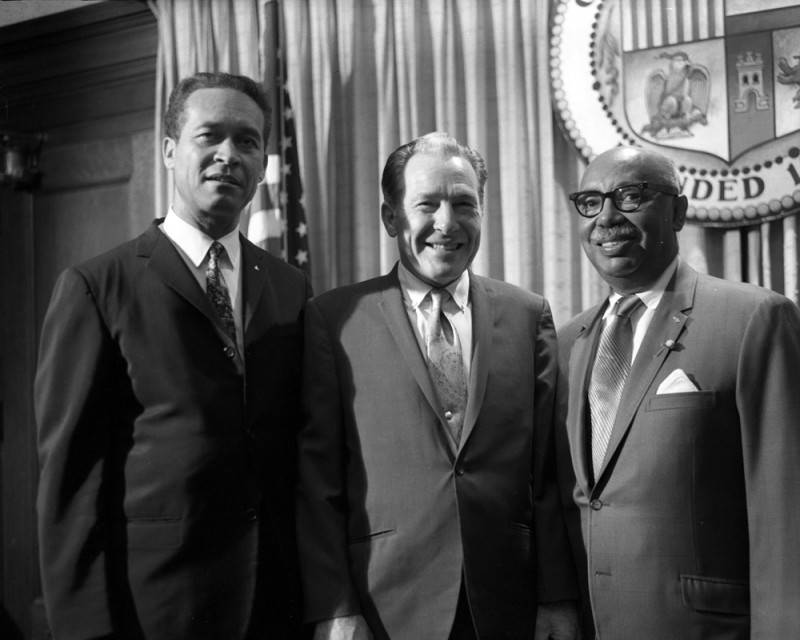
Douglas Dollarhide was the first black City Councilman elected in Compton in 1963. By 1969, he was the Mayor of Compton, a city that had been predominantly white, but by 1969 had become 65% black. Compton became the largest city west of the Mississippi to elect a black Mayor when they elected Dollarhide, who began his career as a mail carrier. Here, Dollarhide (left), poses with Los Angeles Mayor Sam Yorty and Los Angeles Sentinel owner and publisher, Leon Washington in 1970. (Rolland Curtis Collection/Los Angeles Public Library)

Bill Greene was a freedom rider in the South the Civil Rights Movement. Having served a prison sentence for his part in the demonstrations in Mississippi, he escaped from a Louisiana jail after another arrest and became a fugitive, shortly before becoming engaged to his wife. "I spent most of our honeymoon sewing up his ragged clothes. He was one of the larger guys, and the police force always went for him first," his wife remembered. Greene began his career as the first African American clerk in the California Assembly. By 1967, he had succeeded Mervyn Dymally, taking over Dymally's Assembly seat, and again in 1975, claiming Dymally's recently vacated Senate seat. Here, Greene (right) is shown with activist and author Maulana Ndabezitha Karenga, ca 1970. (Rolland Curtis Collection/Los Angeles Public Library)
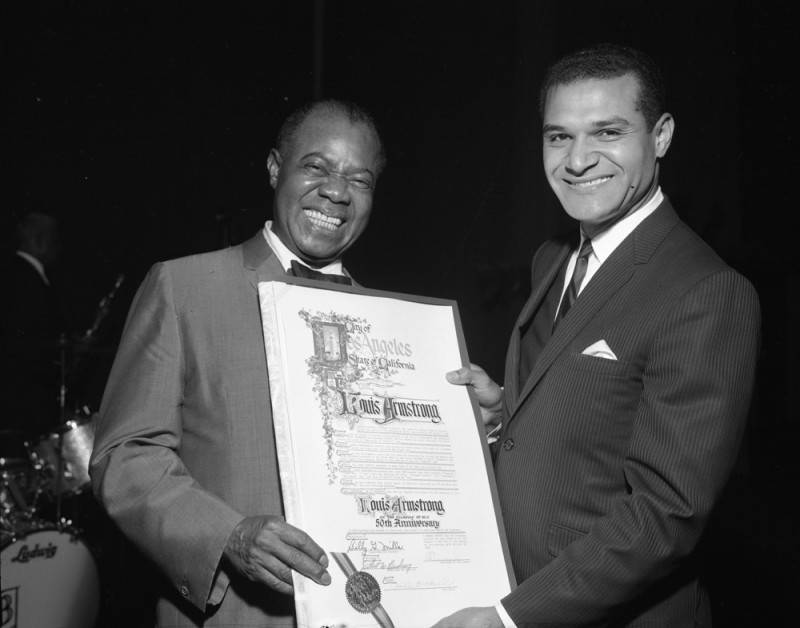
Elected in 1963, Billy G. Mills (1929-) was the third African American to serve on the Los Angeles City Council, a seat he held until 1974 when he became a Los Angeles Superior Court judge. He was the first African American chairman of the Democratic County Central Committee, winning over fellow Councilman Tom Bradley by just three votes. Here, Mills (right) presents a resolution to musician Louis Armstrong in 1966. (Rolland Curtis Collection/Los Angeles Public Library)

In 1940, Tom Bradley was part of the 400 African Americans in a racially segregated LAPD. Bradley was the second African American to join the Los Angeles City Council, representing the 10th district, in 1963. In 1973, he became the first and only African American to become Mayor of Los Angeles, and the second African American Mayor of a major city. His 20 years in office marked the longest mayoral term in the city's history. Here, he poses with future voters while campaigning, circa 1969. (Rolland Curtis Collection/Los Angeles Public Library)
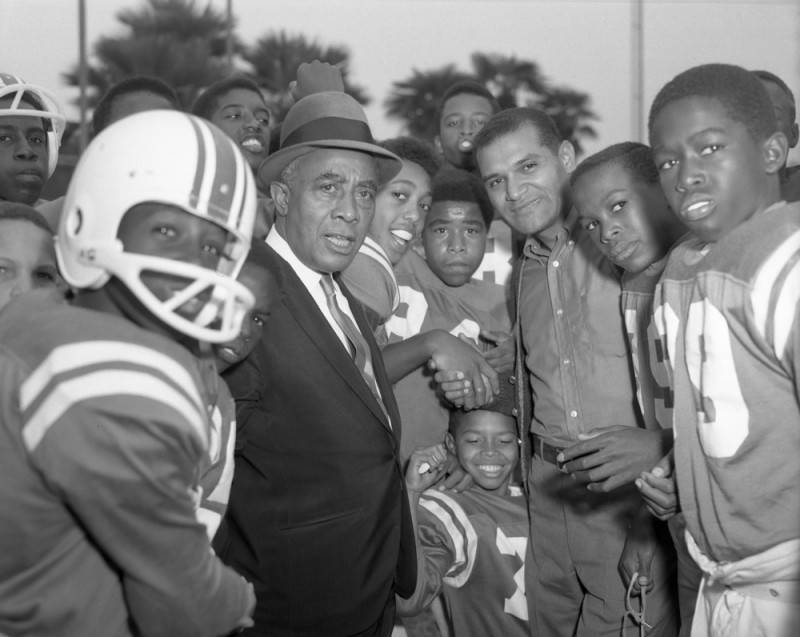
Gilbert Lindsay was born on a cotton plantation in Mississippi where he later picked cotton for 50 cents a day. In 1928, he moved to Los Angeles and became a janitor for the Department of Water & Power. By 1963, at the age of 62, Lindsay became the first African American to join the City Council. Appointed to fill a vacancy, he was reelected consistently until his death in 1990. Here, Lindsay (left) and Billy Mills pose with young football players at Wrigley Field, circa 1966. (Rolland Curtis Collection/Los Angeles Public Library)
(Special thanks to former Rolland Curtis Archivist, Kristine Protacio for providing the image captions that originally appeared in the exhibit: "Firsts, Seconds and Thirds: African American Leaders in Los Angeles During the 1960s and '70s from the Rolland J. Curtis Collection.")
